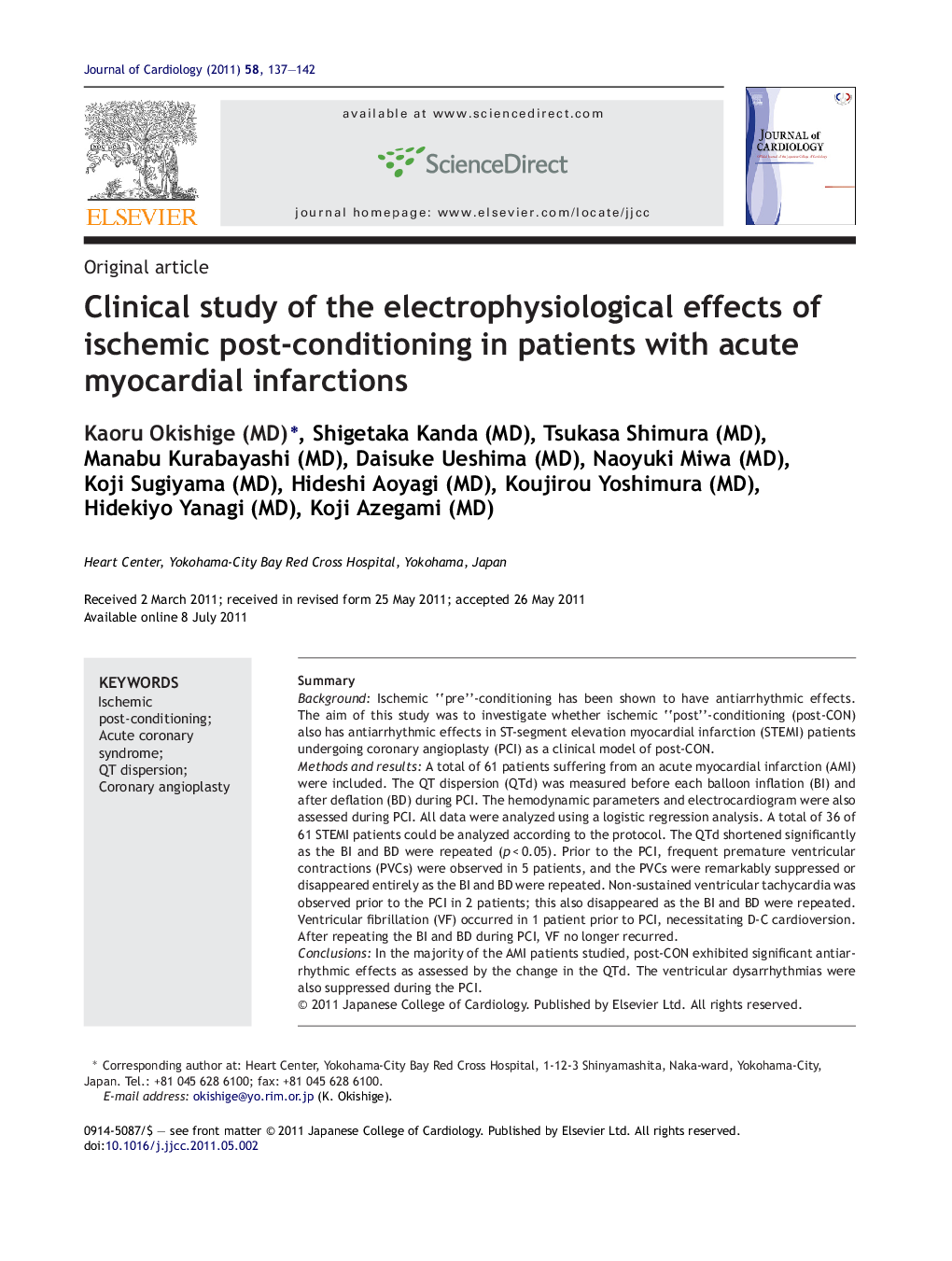| Article ID | Journal | Published Year | Pages | File Type |
|---|---|---|---|---|
| 2963358 | Journal of Cardiology | 2011 | 6 Pages |
SummaryBackgroundIschemic “pre”-conditioning has been shown to have antiarrhythmic effects. The aim of this study was to investigate whether ischemic “post”-conditioning (post-CON) also has antiarrhythmic effects in ST-segment elevation myocardial infarction (STEMI) patients undergoing coronary angioplasty (PCI) as a clinical model of post-CON.Methods and resultsA total of 61 patients suffering from an acute myocardial infarction (AMI) were included. The QT dispersion (QTd) was measured before each balloon inflation (BI) and after deflation (BD) during PCI. The hemodynamic parameters and electrocardiogram were also assessed during PCI. All data were analyzed using a logistic regression analysis. A total of 36 of 61 STEMI patients could be analyzed according to the protocol. The QTd shortened significantly as the BI and BD were repeated (p < 0.05). Prior to the PCI, frequent premature ventricular contractions (PVCs) were observed in 5 patients, and the PVCs were remarkably suppressed or disappeared entirely as the BI and BD were repeated. Non-sustained ventricular tachycardia was observed prior to the PCI in 2 patients; this also disappeared as the BI and BD were repeated. Ventricular fibrillation (VF) occurred in 1 patient prior to PCI, necessitating D-C cardioversion. After repeating the BI and BD during PCI, VF no longer recurred.ConclusionsIn the majority of the AMI patients studied, post-CON exhibited significant antiarrhythmic effects as assessed by the change in the QTd. The ventricular dysarrhythmias were also suppressed during the PCI.
